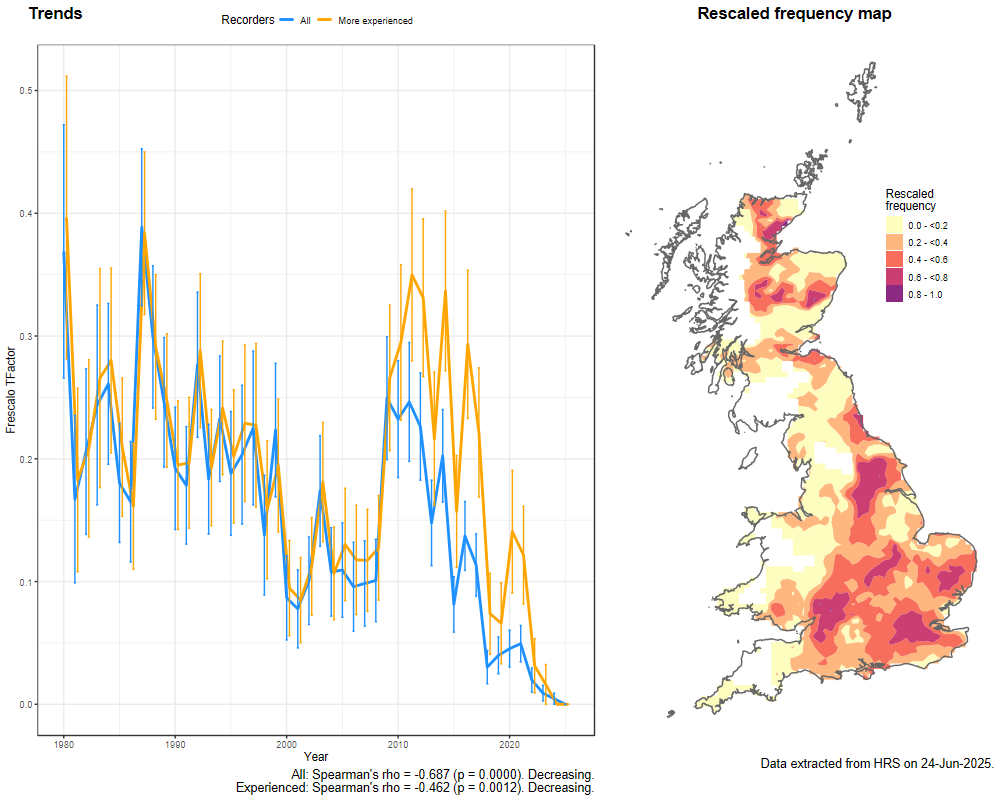Melangyna labiatarum (Verrall, 1901)
Identification
Identification difficulty = 4. ![]()
![]() according to Ball & Morris, 20241
according to Ball & Morris, 20241
Biology
The larva is aphidophagous but it remains undescribed. Members of this genus usually appear to have close associations with a particular, or narrow range of aphid species. Adults are usually found in woodland where they visit flowers, especially Hogweed Heracleum sphondylium and Wild Angelica Angelica sylvestris, in rides and glades.
Flight period
The following plots show the number of unique records per week excluding those reported to be of immature stages.

Distribution
There is considerable confusion between this species and M. compositarum and many recorders do not attempt to separate them, consequently the data are not wholly reliable. This species is believed to have the more southerly distribution of the two, and is common in well-wooded lowland districts of England and Wales. There are scattered Scottish records, but their validity is open to question.

Trends
The following plots show the Frescalo TFactor vs year and a map of the rescaled frequency (all records) for the species.
-
Ball, S., & Morris, R. (2024). Hoverflies of Britain and Ireland. WILDGuides (3rd ed.). Oxford: Princeton University Press. ↩